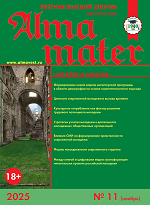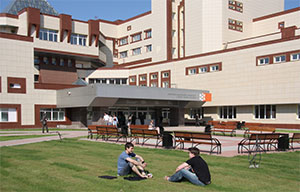Liubov A. Lebedintseva, D. Sc. (Sociology), Professor, Saint Petersburg State University, e-mail: llebedintseva879@gmail.com
Jomart K. Simtikov, D. Sc. (Politology), Professor, Abai Kazakh National Pedagogical University, Kazakhstan, e-mail: zhomart-67@mail.ru
Abdurashid M. Kadyrov, D. Sc. (Economy), Professor, Tashkent State University of Economics, e-mail: a.kadirov@tsue.uz
Zhang Hailun, Applicant at the Department of Sociology, Saint Petersburg State University, e-mail: zhanghailunno1@126.com
The article analyzes statistical data and official sources related to the development of digitalization processes in China, in particular, in Chinese megacities. It is known that the fastest and most intensive development of infrastructure, modern types and methods of Internet connection, as well as the number of active network users can be observed in large cities. It should be noted that digital and network development in China continues in terms of continuous improvement of network infrastructure, optimization of the quality of communication services, and improvement of the comfort level of Internet users.; the continuous expansion of the field of digital services aimed at the elderly. Among the problems accompanying the development of a digital society, we note a large difference in the level of dissemination of modern ICT and infrastructure in urban and rural areas. The article examines the reasons for not using the Internet in everyday life; the factors that encourage people who do not use the Internet to try to access the Internet; age differences in digital literacy and skills; the scale of use of various Internet applications. Special attention is paid to the analysis of the distribution of Chinese provinces into four clusters based on the developed comprehensive index for assessing the spatial distribution of the Internet development index. In conclusion, it is noted that the issues of solving the problems of digital inequality in interprovincial, age, and socio-professional aspects are recognized in China as an important strategic advantage and a way to develop a post-industrial society.
Keywords: China, digitalization, digital inequality, digital infrastructure, Chinese cities
The study was supported by RSF grant No. 24-28-01448
References
- Balashova, M., Tsvigun, I., Yusupova, M. The creation of Technoparks for the Development of Innovative Production in the Country: The Experience of China. Russian-Chinese Studies. 2023. No. 1. Pp. 36–48.
- Lebedintseva, L., Deriugin, P., Zhang, H. Peculiarities of Social Inequality Parameters Transformation in Urban and Rural Conditions in China / East-West: History and Modernity: Yearbook. Blagoveshchensk: Blagoveshchensk State Pedagogical University Press, 2024. Pp. 75–83.
- Lin, D. User Satisfaction with the Level of Penetration and Technical Characteristics of the Internet in China. Politics and Society. 2020. No. 1. Pp. 29-37.
- Rinchinov, A. The history of the Development of Digital Communication in China: The Creation of a Unified Information Space and the Concept of ‘Digital Inequality’. Modern Scientific Thought. 2024. No. 3. Pp. 175–180.
- Xi Urges Studying, Absorbing Netizens' Opinions in Formulating 15th Five-Year Plan. URL: https://www.gov.cn/govweb/lianbo/fabu/202310/content_6911086.htm. (accessed on: 21.07.2025). In Chinese.
- Announcement of the Ministry of Industry and Information Technology on the Quality of Telecommunications Services in the fourth quarter of 2023. URL: https://wap.miit.gov.cn/zwgk/zcwj/wjfb/tg/art/2024/art_8aad8a995d7f4a2b8b9f359b07eaae54.html (accessed on: 19.07.2025). In Chinese.
- China Statistical Yearbook 2020 / National Bureau of Statistics of China. 2020. URL: http://www.stats.gov.cn/sj/ndsj/2020/indexeh.htm (accessed on: 05.08.2025).
- China Internet Network Information Center. The 45th China statistical report on internet development. Cyberspace Administration of Сhina. 2020. URL: https://www.cnnic.com.cn/IDR/ReportDownloads/202008/P0202008275499538749... (accessed on: 15.06.2025).
- Deriugin, P., Lebedintseva, L., Veselova, L. Social transformations of Chinese society in the focus of modern sociological science / The Routledge Handbook of Chinese Studies, 2021. Pp. 389–401.
- Song, Zhouying, Wang, Chen, Bergmann, Luke. China’s Prefectural Digital Divide: Spatial Analysis and Multivariate Determinants of ICT Diffusion. International Journal of Information Management. 2020. Vol. 52 C). DOI: 10.1016/j.ijinfomgt.2020.102072
- The 53rd Internet Development in China Statistical Report. China Internet Network Information Center, March 2024. URL: https://www.cnnic.com.cn/IDR/ReportDownloads/202405/P0202405095184432053... (accessed on: 05.08.2025).
- The ICT Development Index (IDI): Conceptual Framework and Methodology. URL: https://www.itu.int/en/ITU-D/Statistics/Pages/publications/mis2016/metho... (accessed on: 05.08.2025).
- Wen, J., Jiang, R. Overcoming the Digital Divide with ICT Diffusion: Multivariate and Spatial Analysis at China’s Provincial Level. SAGE Open. 2023. No. 13 (1). Pp. 215–231.
- Zhang, Hailun, Tan, Shu. Container and Magnet: A New Theory on the Concrete Function of Contemporary Cities. Urban and Regional Planning. 2022. No. 7 (3). Pp. 68–73.











.png)






